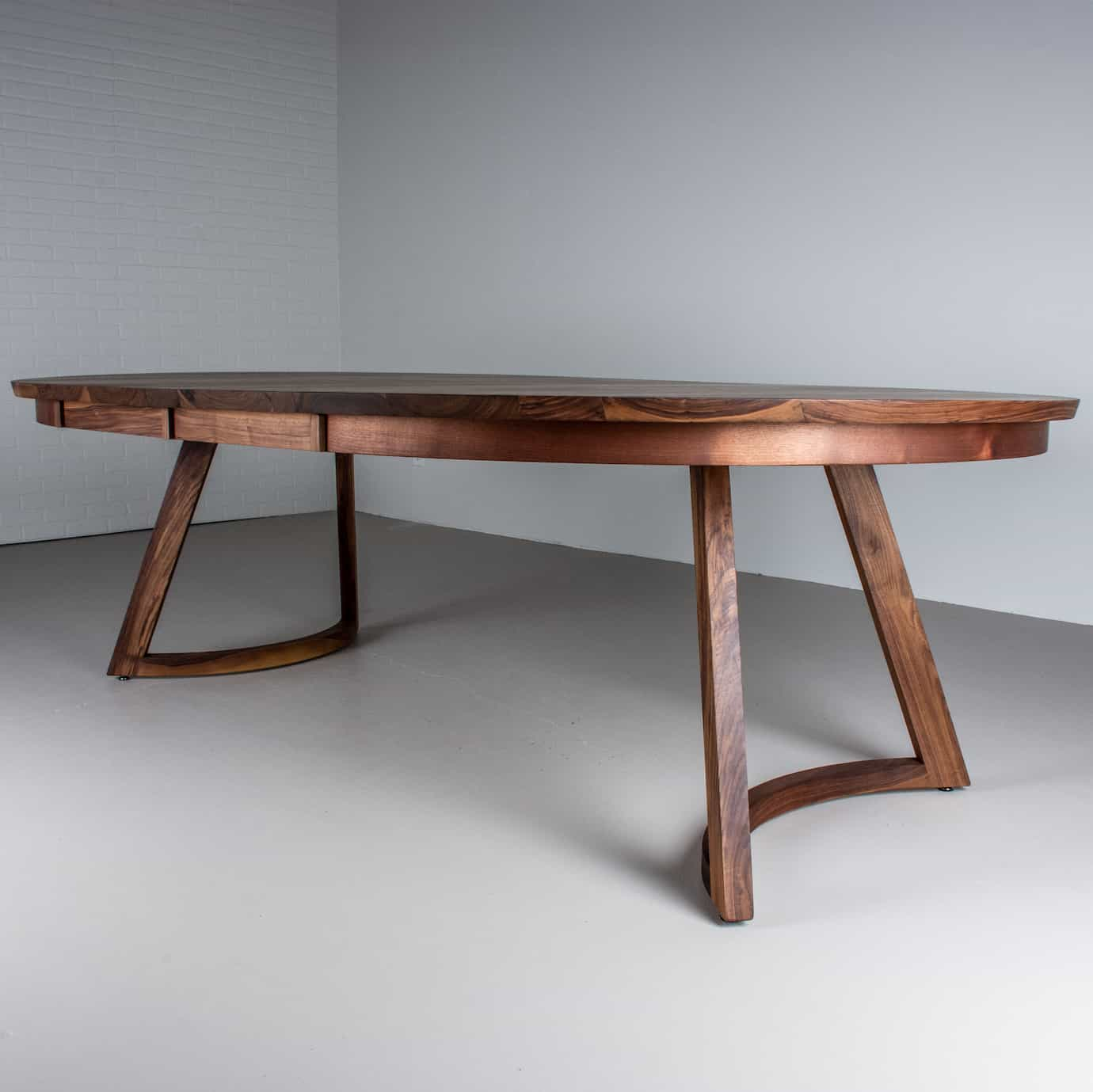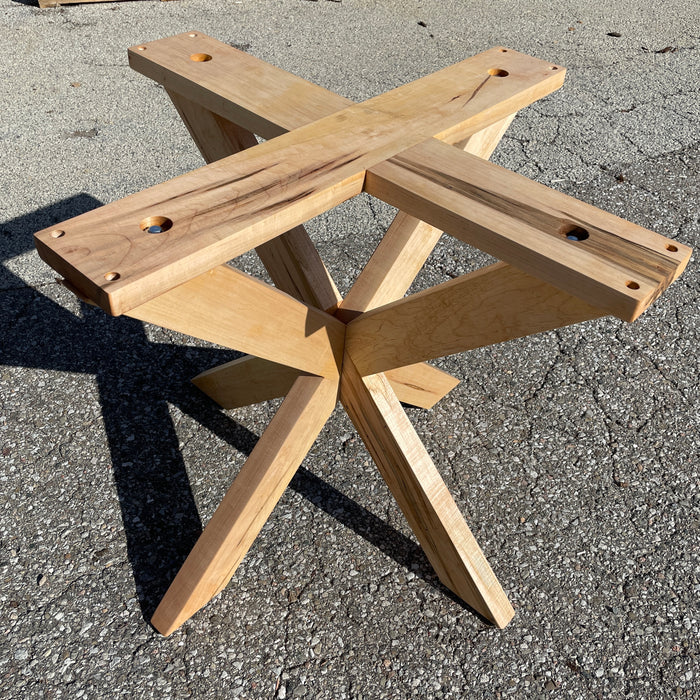Customize Your Table with Special Dining Table Legs Wood Creations
Customize Your Table with Special Dining Table Legs Wood Creations
Blog Article
Key Elements to Keep in Mind for Eating Table Legs Wood Choices
When selecting timber for dining table legs, a number of critical elements require cautious consideration to ensure both performance and visual charm. The option of wood type, characterized by its sturdiness and one-of-a-kind grain patterns, plays a crucial role in the overall layout and long life of the piece. Additionally, one should ponder upkeep demands and the ecological effects of sourcing products. As these elements intertwine, they substantially influence the last result of your dining table. Nonetheless, understanding the nuances of each aspect can be complicated, bring about crucial decisions that merit additional exploration.
Timber Types and Qualities
When selecting wood for dining table legs, it is important to recognize the one-of-a-kind features of numerous timber types. Different timbers offer distinct advantages and drawbacks, affecting both the resilience and visual allure of the finished product.
Hardwoods, such as oak, cherry, and maple, are frequently favored for their toughness and resistance to wear. Oak, recognized for its impressive resilience, additionally includes a popular grain that can include personality to the table. Maple uses a smooth surface and is less prone to bending, making it a reliable selection for functional furnishings. Cherry timber, with its abundant shade that strengthens with time, gives an extravagant appearance however may need even more maintenance to stop scratches.
On the various other hand, softwoods like yearn and fir are more affordable and less complicated to deal with, yet they are much less resilient than woods. Pine is light-weight and features a warm, rustic appearance, making it a preferred option for laid-back dining settings. Nonetheless, it is extra susceptible to scrapes and damages.
Comprehending these features will certainly assist in making an educated choice to ensure the legs of the table fulfill both practical and visual demands.
Grain Patterns and Visual Appeal
The timber's grain is not simply an aesthetic attribute; it conveys an unique character and appeal to each piece. Different wood varieties show distinctive grain patterns, ranging from the straight lines of maple to the elaborate swirls of oak and the striking number of walnut.
Additionally, the alignment and scale of the grain can influence the viewed size and style of the table. Bigger, extra noticable grains may lend a vibrant, remarkable effect, while finer, subtler grains can produce a refined, underrated appearance. Furthermore, the finishing procedure can additionally enhance these patterns, stressing the all-natural charm of the timber and drawing out rich hues.
Inevitably, the option of grain pattern should integrate with other design aspects, such as the tabletop and bordering furniture, making certain a natural aesthetic that raises the dining experience. Thoughtful choice of wood grain not just adds to the table's appeal but additionally reflects the proprietor's taste and style.
Durability and Stamina
The longevity and toughness of dining table legs are extremely important considerations for guaranteeing long life and stability in any type of eating room. Choosing the ideal timber is important, as various varieties exhibit varying degrees of strength. Hardwoods such as cherry, oak, and maple are frequently liked for their inherent strength and resistance to wear. These materials not only stand up to day-to-day usage yet additionally sustain hefty lots, making them ideal for dining tables that frequently fit several restaurants. Dining Table Legs Wood.

Ultimately, investing in top quality wood and robust building and construction approaches will certainly generate an eating table that stands the examination of time, while supplying a trustworthy structure for many meals shared amongst friends and family. Prioritizing resilience and stamina makes sure that your dining table look what i found continues to be functional and aesthetically pleasing for many years to find.
Maintenance and Care
Correct upkeep and treatment are important for preserving the sturdiness and strength of table legs made from wood. Regular cleansing is necessary; utilizing a soft, damp towel makes certain that dirt and debris do not accumulate, which can bring about scrapes and dullness. It is advisable to stay clear of severe chemicals or abrasive products that might damage the coating.
Additionally, using an appropriate wood gloss or wax occasionally can help keep the shine and protect the timber from dampness and spills. It is critical to comply with the supplier's suggestions pertaining to the type of item to make use of, as specific coatings may react detrimentally to particular chemicals.
Moisture and temperature level changes can additionally affect wood table legs, creating them to warp or crack. It's finest to position the table away from direct sunshine and warm resources. If the table legs have any kind of scrapes or damages, resolving these promptly can stop more damage.
Lastly, regularly evaluating the joints and screws for tightness is necessary to preserve architectural stability (Dining Table Legs Wood). By adhering to these maintenance methods, home owners can guarantee their wood dining table legs remain appealing and practical for many years ahead
Ecological Factors To Consider
When picking timber for eating table legs, it's vital to take environmental factors to consider right into account. The sourcing and sustainability of timber are extremely important in minimizing ecological impact. Opting for timber from qualified resources, such as those supported by the Woodland Stewardship Council (FSC), makes sure that the lumber is collected sensibly, advertising forest conservation and biodiversity.

Furthermore, local sourcing of wood decreases transportation emissions, supporting local economies while reducing environmental impact. It is also recommended to be knowledgeable about the wood's treatment and finishing procedures, as particular chemicals can be unsafe to both human wellness and the setting. By focusing on sustainable wood choices, customers can add to environmental preservation while enjoying the durability and elegance of their table legs.
Final Thought
In conclusion, picking timber for dining table legs demands this post cautious factor to consider of various factors, consisting of timber kinds, grain patterns, and longevity. Upkeep needs and ecological sustainability further influence timber options, emphasizing the significance of sourcing from certified or recovered products.
When picking timber for eating table legs, numerous crucial factors require cautious consideration to make certain both performance and visual appeal.Correct maintenance and care are vital for maintaining the toughness and strength of dining table legs made from timber.When choosing wood for eating table legs, it's necessary to take environmental considerations into account. By focusing on lasting timber choices, consumers can contribute to environmental preservation while taking pleasure in the durability and charm of their dining table legs.
In final thought, choosing timber for eating table legs requires cautious factor to consider of numerous variables, consisting of timber kinds, grain patterns, and longevity. Dining Table Legs Wood.
Report this page